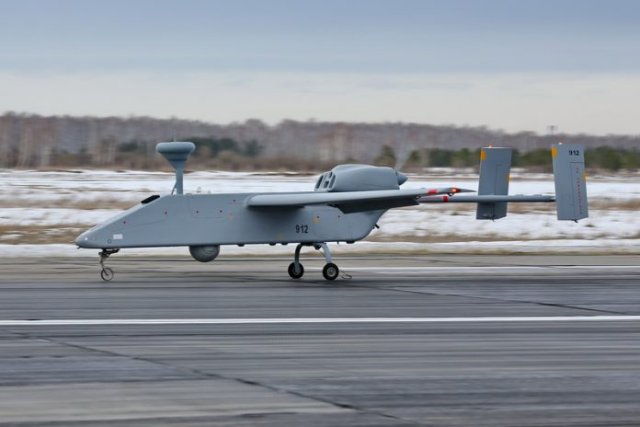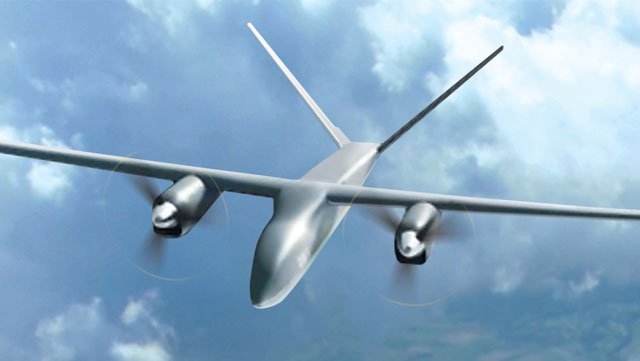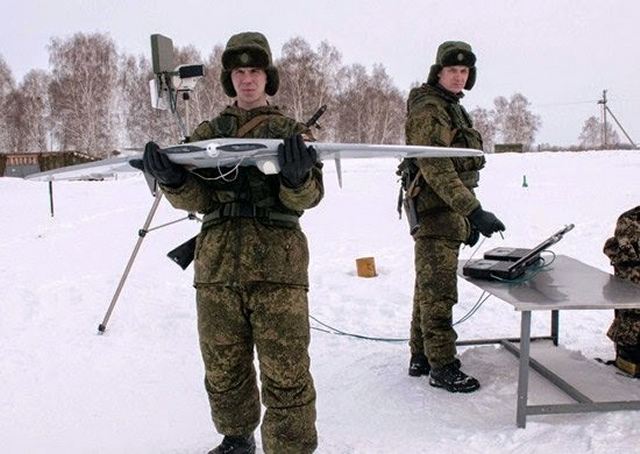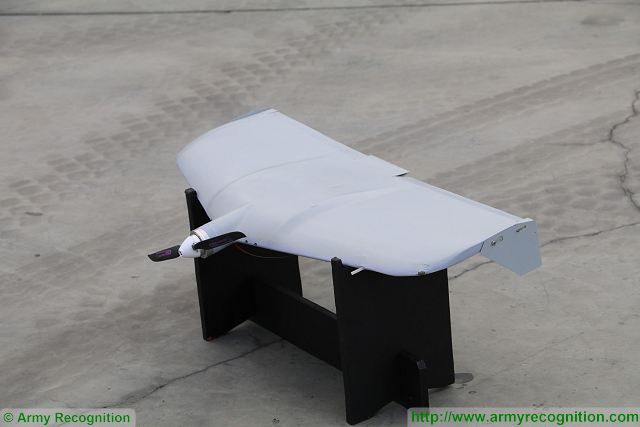Russia Considers Developping a Full Range of UAVs in Coming Years
http://www.airrecognition.com/index.php/focus-analysis-photo-report-aviation-defence-industry/aviation-defence-industry-technology/3141-russia-considers-developping-a-full-range-of-uavs-in-coming-years.html
The Russian Defense Ministry is seeking to set up a complete line of unmanned aerial vehicles (UAV), including tactical and high-altitude ones, expert Denis Fedutinov writes in the pages of the Vedomosti daily. Five years ago, Russia’s lagging behind technologically developed nations by far was a commonplace in the discussion of the development of domestic UAV systems. Russian customers, among which the Defense Ministry ranks first, have done much since then to remedy the problem.
 Russia eyes complete line of UAVs for coming years Russia's license-produced Forpost UAV
Russia eyes complete line of UAVs for coming years Russia's license-produced Forpost UAV Russia caught up quickly enough as far as small-size drones are concerned, with the military starting to buy the systems developed by Russian firms at their own expense. However, strong efforts have had to be made to launch the development of heavier unmanned aircraft. The efforts should continue, given the programs that are still in progress. Russian companies are known to be developing a number of sophisticated unmanned aircraft systems, such as a tactical UAV, two medium-altitude long-endurance (MALE) drones, high-altitude unmanned aircraft and a stealthy reconnaissance/attack UAV. In addition, an upgrade of the Forpost tactical drone has been planned.
As to the Forpost, it is the Searcher Mk.II system from Israel Aerospace Industries (IAI), license-produced by the UZGA plant in Yekaterinburg. Initially, the acquisition of these UAVs seemed to be a forced step, but the order of another batch was reported last year. In all probability, further acquisition plans may lead to buying about more 50 systems with a total of 150 UAVs. To hedge against political risks, the system’s upgrade and an increase in its locally manufactured content have been pondered. It was reported in the media that the updated UAV would be heavier than the baseline model, with the former’s weight to stand at about 500 kg as opposed to the 436 kg of the latter. A weight increase will necessitate design modification to the airframe. In addition, plans are known for the UAV to be equipped with Russian-made avionics.
A pure Russian tactical drone development program is Korsar. The system presumably intended as an analog of the US-made Shadow is being developed by the Rybinsk-based Luch design Bureau, a subsidiary of Vega Corp. The Korsar’s primary missions will be intelligence, surveillance and reconnaissance (ISR) within the 50-km radius. The supposed look of the drone was unveiled in September 2015. Its takeoff weight will be around 200 kg. Concurrently with developing the UAV, its production facility was being established in Rybinsk and statements were made that the production was scheduled to commence in late 2016 and to reach full capacity in late 2017.

Russia eyes complete line of UAVs for coming years Simonov Design Bureau's Altair MALE UAV project
Two MALE-class drones are in development in Russia too. Initially, it was reported that the aircraft would have a takeoff weight of about 1 ton and 5 tons respectively. The similarity of their dimensions to those of the US-made Predator and Reaper served the ground for presuming their operational similarity as well. One of the two systems includes a medium-altitude UAV under development by the Kronstadt Group for the Russian Defense Ministry. The latter ordered its development in October 2011. The aircraft is known to weigh around 1.2 tons, with its maximum payload accounting for 300 kg. Reportedly, the UAV will be able to remain airborne for 24 hours. In spring 2016, the press reported the start of the trials of the UAV at the Gromov Flight Research Center in Zhukovsky (Moscow Region). The kick-off of its airfield performance tests indicates that the program has passed an important landmark. At the same time, its completion will apparently take a lot of time.
The other MALE system, which has a heavier UAV designated as Altair, is being developed by the Simonov Design Bureau (previously Sokol Design Bureau) in Kazan under the Altius program. The development started in 2011. The twin-engine drone is a high-wing monoplane with a wingspan of slightly less than 30 m and the V-tail. Presumably, its maximum endurance will be 48 hours. According to Tatarstan’s government officials, the flight tests of the aircraft were kicked off in July. Tatarstan’s Prime Minister Ildar Khalikov said it was to enter production in 2018. Given the status quo of the program, the premier seems to be overly optimistic.
Sukhoi has been developing its Okhotnik heavy hunter/killer UAV since 2012. Mikhail Pogosyan, who led the corporation at the time, said the designing of the system was to become the first cooperative effort of Sukhoi and MiG. The UAV is believed to have a takeoff weight of around 20 tons. The Northrop Grumman X-47 seems to be its closest foreign counterpart. Russia’s Military Industrial Commission Deputy Chairman Oleg Bochkaryov said in 2014 that the unmanned aircraft’s maiden flight was expected in 2018. However, the example of foreign firms, which started their work as far back as the early 2000s, leads one to believe that the completion of the program is a long-run prospect even if the UAV flies on schedule.
Another high-altitude UAV is being co-developed by TsAGI and Myasishchev. The aircraft intended to become a technology demonstrator is being designed under the Obzor-1 program. The two companies do not release details about their program. Presumably, their drone will not be something outside the box. It is more likely to resemble the US-made high-altitude long-endurance Global Hawk. As was reported in the press, Myasishchev’s design bureau was to devise the design documentation before year-end 2016 and begin to build the first prototype in 2016. Even if all goes to plan, this is going to be a rather long-term program.
Another high-altitude UAV, the Sova, is under development by the Tiber Company with the support by the Advanced Research Foundation (ARP). It is the so-called pseudosatellite - an aircraft capable of long-time loitering over the assigned area at an altitude higher than the one used by airliners. The drone’s power supply is performed by its solar panels. The approach is similar to the one embodied in the Zephyr UAV of Airbus that bought it from QinetiQ. A prototype with the 9-m wingspan and 12-ton takeoff weight passed its flight tests in July. The aircraft flew a mission, which duration exceeded 48 hours.
ARF noted that the UAV would come in handy for long-term monitoring in the high latitudes and for meeting the growing demand for telecom services in the plethora of spheres.
As the outline of the programs shows, the Russian Defense Ministry has been supervising numerous ongoing UAV research and development programs. Covering all the bases, the military tries to form as complete range of UAV types as possible. Obviously, this is not an easy thing to do for reasons beyond its control, including the shortage of competencies in this sphere, technological and personnel problems and financial issues. This makes the slippage behind schedule almost unavoidable, with some of the programs slipping pretty far behind. Nonetheless, while the development of the high-altitude strategic UAV and heavy hunter/killer drone will certainly take a long time, Russian analogs of the US-made Shadow, Predator and Reaper shouldering the bulk of the USAF’s missions may well appear soon enough, expert Denis Fedutinov writes in his article in the Vedomosti daily.















